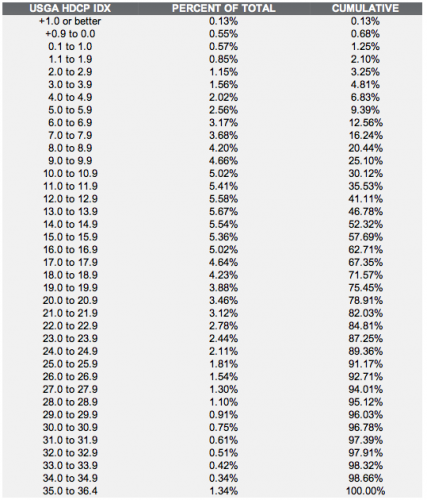The Dan Plan or: The story of a man who quits his job to become a professional golfer despite having never played the game.
In April, 2010, a 30-year-old man named Dan quit his day job in an attempt to become a professional golfer. He was set in mind and determined it would be possible when walking away from a well-paying gig as a commercial photographer in Portland, Oregon. The only caveat was that he had zero experience with golf and basically no experience with athletics in general. He was, and is, pretty much average by most standards. 5’9″ and 150 Lbs, played a bit of tennis as a kid, ran cross country freshman year of high school then took to different interests for the remainder of high school and through university. Dan wasn’t exactly a couch potato, but was much closer to that than to Usain Bolt.
Regardless of what he did with the first 30 years of his life, the goal was to make the PGA Tour through testing out Dr. K Anders Ericsson’s theory that it takes 10,000 hours of deliberate practice to become an over-achiever in any specific field. Golf seemed like the perfect vehicle for this test. It was something he had never done before, it was a mix of physical and mental, it was objective and easy to track one’s progress as there is a world-wide handicapping system already established, and it was outside. Everything about it felt right, so after 9 months of planning and 5 years of saving up money he started off on the journey. (On a side note, he originally saved money to put himself through graduate school, but after enrolling and going to one class he realized it was not the right path.)
Dan spoke with Dr. Ericsson a handful of times in the beginning to figure out how to go about the daily routine. Originally, he figured he could practice for 10 hours a day, 6 days a week and get to the 10,000 hour mark in about 3.5 years, but after speaking with Ericsson about concentration levels and learning absorption, it was evident that this was quickly becoming a much longer project. The important thing was not just to do it, but to do it right. If he was going to go all-in and dedicate 6-plus years of his life to this he didn’t want to have any regrets. A typical day, then, would be between 4-6 hours of time literally standing over a ball engaged in practice along with a handful of extra curricular activities such as working out, watching film, reading about swing theory, meditation, etc. The days would be long, yet the hours counted towards the 10,000 would be few as only the time spent literally working with the ball would go towards the 10,000 hours.
Plan in place, he set out on a cold-as-hell April day in Portland, OR. It was rainy, below 40 degrees with 20 mph winds and he wore jeans, running shoes and a bright yellow hooded rain jacket like you would see on a New England fishing pier. He went to a municipal golf course and didn’t know what the policy was on using the putting green, so introduced himself to the man at the pro shop and told him about his goal as a golfer. The man asked if he was a scratch player and Dan said he didn’t know what that means and that he hadn’t played golf before. There were a few laughs and some jokes tossed around then the pro-shop man let him know that municipal courses are owned by the city and anyone could practice there. This was good news as the first chapter of The Dan Plan was all about putting and if he could do that for free then that was a huge plus as it was going to be a stretch, to say the least, where finances were concerned.
Dan went to work putting away. From one foot away from the hole. For four hours. Every ten putts he wrote down a number in a small Rhodia notebook. The Plan was pretty simple, he would start from one foot away from the hole and stay there until he reached a specific proficiency, then move out to 3 feet and do the same, then 5, 10, 20, 40 and so on until he had reached a PGA Tour average from all of those distances. He thought it would take a month or so to go through all of the putting distances, but it ended up being harder than he had imagined. It only took one day to get to the 1-footers to a 100 percent level, but 3-footers were a different story. On the first day he attempted 3-foot putts, his percentage made for the day was 63.73%. After a month of doing just this distance, the percentage went up to 84.8% and then after another few weeks he was finally consistently in the 90+% range where he needed to be. It was the same for 5-footers, although it took more time and the percentage plateaued around 80%, which is right at the level he needed to be.
This pattern continued until he finally got a second club, which was a pitching wedge he started using on August 29, 2010. He couldn’t get enough! After solely putting the ball for 4.5 months he finally could actually hit the thing off the ground. It was a good day. As it was for putting, so it would be for chipping. He started on the fringe just a few feet off the putting green and learned how to knock the ball onto the green, got to his percentage goal from this distance and then moved back some, slowly working away from the green. By February 2011 he was starting to “play” some golf from about 30 yards off of the putting green and the goal was to make everything in 3 strokes: hit it on and then two-putt. He worked at it daily and continued the push away from the hole. In March he had his first full swing lesson and then started practicing/playing from about 100 yards out. The entire time, he was still spending the majority of his days working on all of the distances he had already worked through. The new skill, or distance, he was trying to learn would be what he worked on for the first hour of the day and the rest of the day was reinforcing previously learned parts of the game.
He added clubs slowly through the year and on November 14, 2011 he hit a driver for the first time in his life. It was a great feeling to have made it to a driver and to celebrate he went down to Bandon Dunes, Oregon to play 36 holes with Freakonomic’s author Steven Levitt. Steven is a good player and they had a blast out there on the Oregon coast. Dan shot a 94 on the first course and a 98 on the second, with the driver in the bag for the first time and actually still only having 8 clubs: driver, 3-hybrid, 6-iron, 8-iron, pitching wedge, 52-degree wedge, 56-degree wedge and putter. There were only eight clubs because he worked through these with the idea of filling in the rest of the clubs later on as there is not much of a difference between an 8-iron and a 7-iron as far as learning the swing is concerned.
On December 22, 2011 Dan finally got a full set of 14 clubs. Since then, he has been learning what distances each club goes while focussing on his mechanics and always working hard on the short game as that’s the difference between a decent golfer and a great golfer, or so he’s come to realize. He’s fallen for the sport completely and it has basically consumed his life. If Dan’s not on the course, he’s thinking about the last round he had or whatever swing thought he may be trying to build into his swing.
Currently he is approaching the 5,500 hour mark and it has been about 4.5 years since hitting that first 1-foot putt. Doing that math, that means he has about 4 years remaining. The project grows as it ages, and not everything goes as planned, but he’s in it for the long haul and will be writing about his experiences while collecting data along the way.
Right now Dan’s handicap is 3.3. Judging by the stats provided by the USGA:
 That puts Dan in the top 4.5% of the 26 millions golfers in the US.
That puts Dan in the top 4.5% of the 26 millions golfers in the US.

